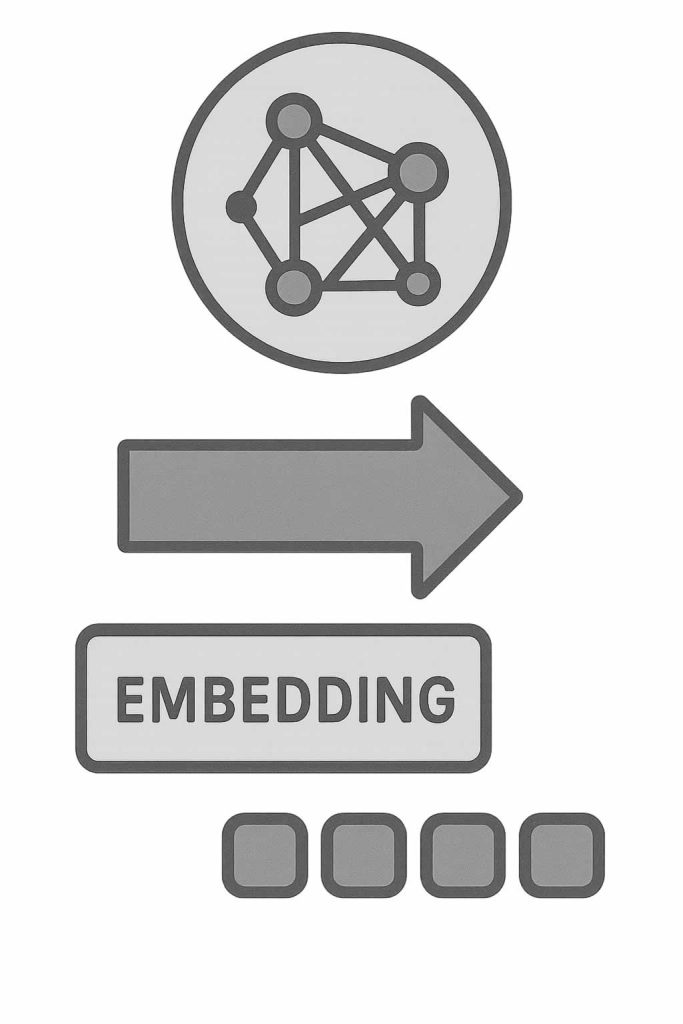

In AI and tokenization, embedding refers to the process of converting tokens which are often raw words, phrases, or data fragments into dense numerical representations that capture meaning, context, or relationships. These representations are called embeddings, and they allow AI models to work with complex inputs like language, images, or structured data in a form that’s understandable to the model. At AEHEA, we use embeddings in nearly every AI project because they make the raw inputs both machine-readable and rich in semantic depth.
In the context of language models, embedding happens after tokenization. Tokenization breaks a sentence into parts (like words or subwords), and each of those tokens is then mapped to a high-dimensional vector often hundreds or thousands of values. These vectors are not arbitrary. They are learned during training so that tokens with similar meanings or roles appear closer together in this vector space. For example, the embeddings for “king” and “queen” will be closer to each other than to unrelated words like “banana” or “car.” This allows the model to understand nuance, analogy, and relationships.
In other domains, like images or audio, embeddings work the same way in principle. An image, for example, might be broken into patches or features and embedded as vectors that represent color, shape, and spatial information. These embeddings are then processed by neural networks for classification, detection, or generation tasks. Embeddings allow the model to generalize to recognize patterns and similarities without relying on exact matches.
At AEHEA, we also use embeddings beyond model input. They’re useful for comparing data such as finding similar documents, clustering users by behavior, or building recommendation systems. Once data is embedded, we can calculate similarity using distances in vector space, such as cosine similarity or Euclidean distance. Embeddings turn raw, unstructured input into meaningful, structured insight making them a cornerstone of effective AI systems.
